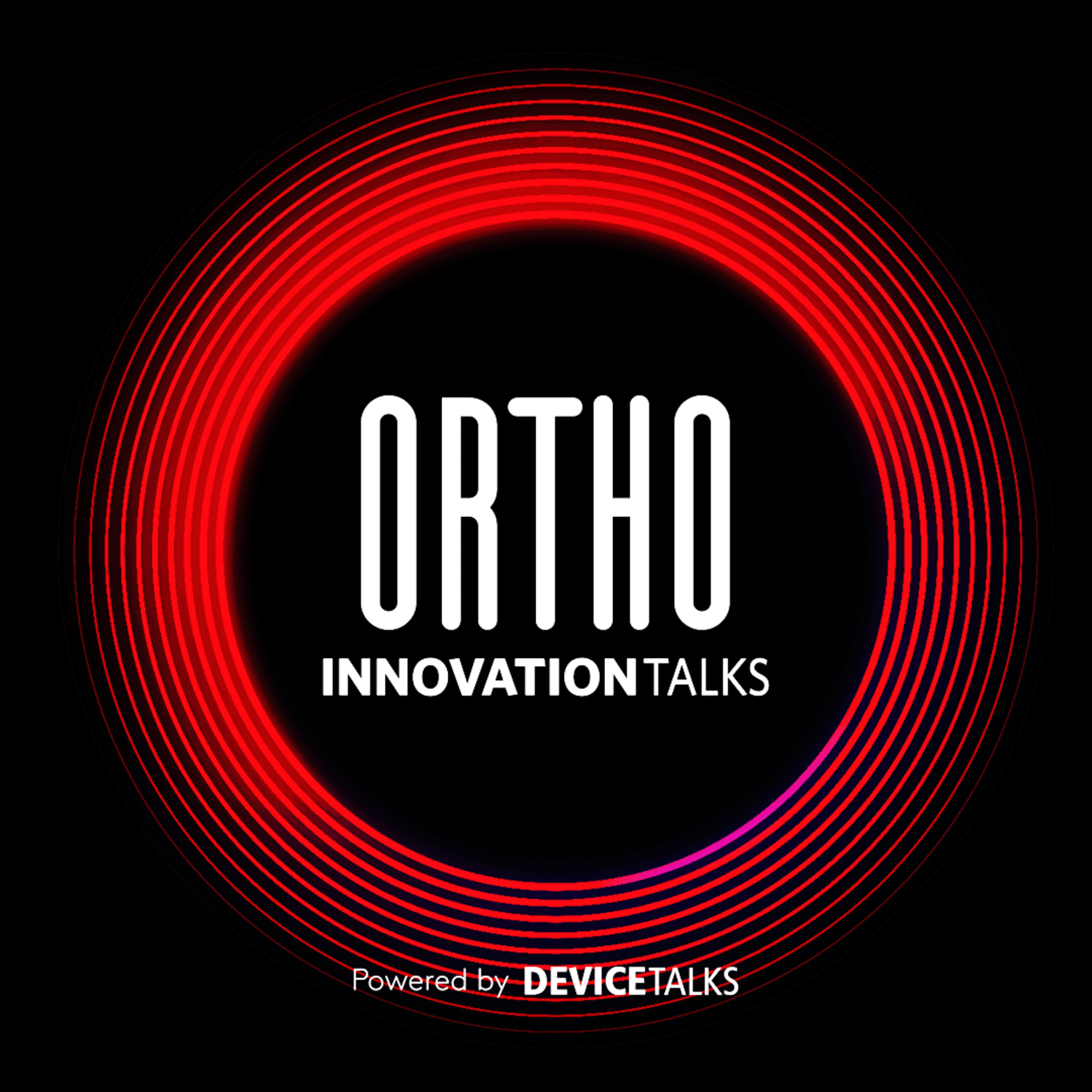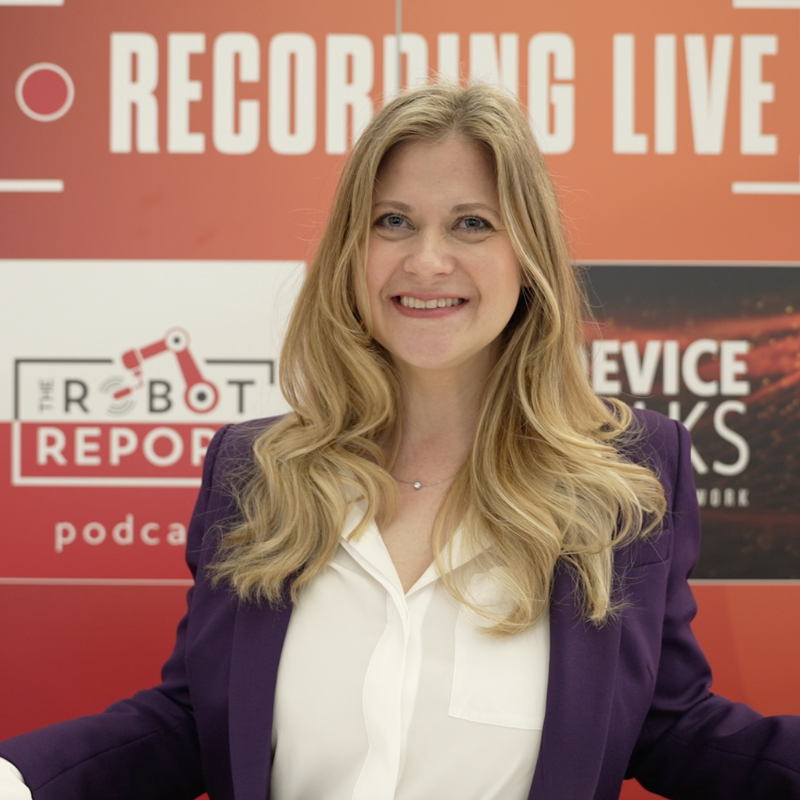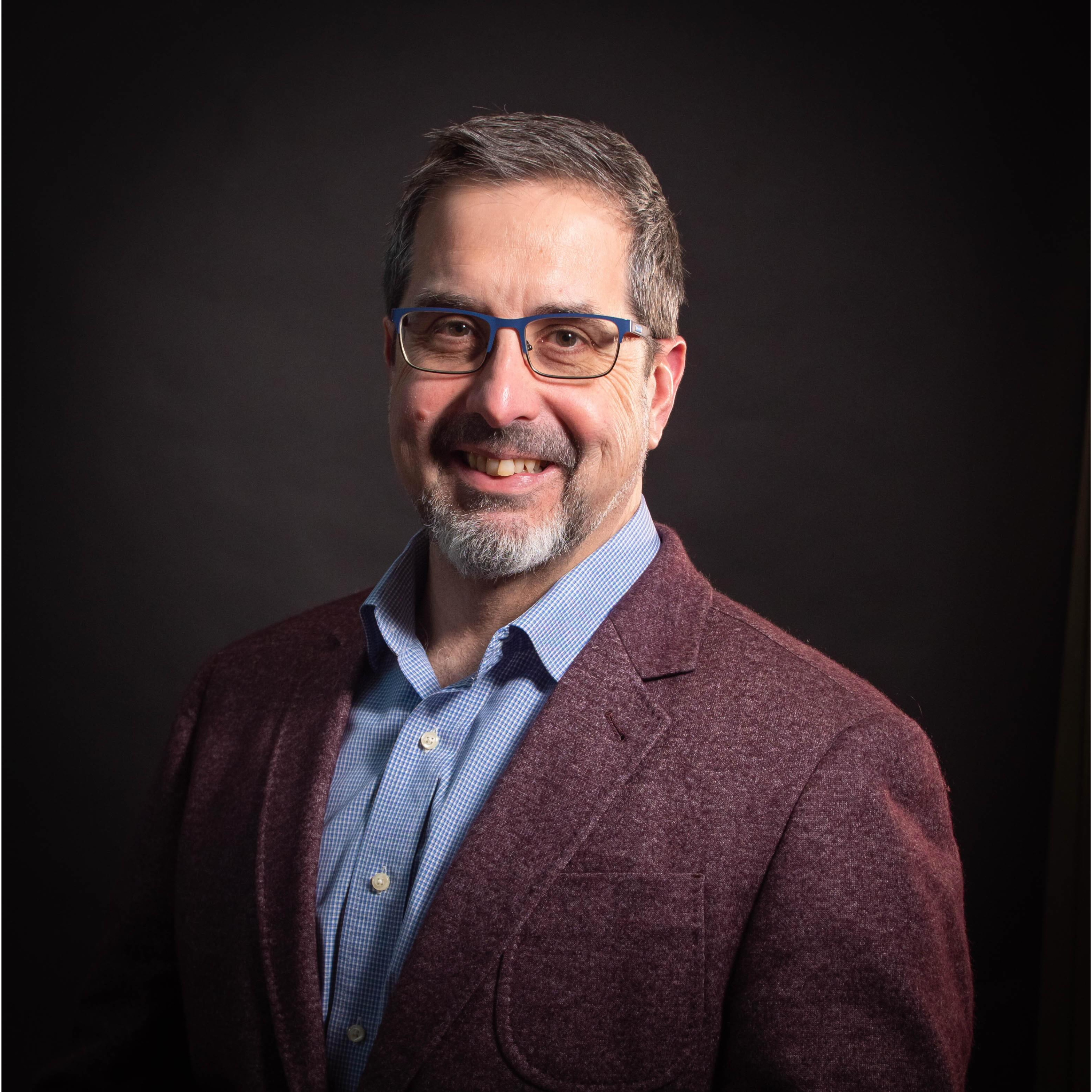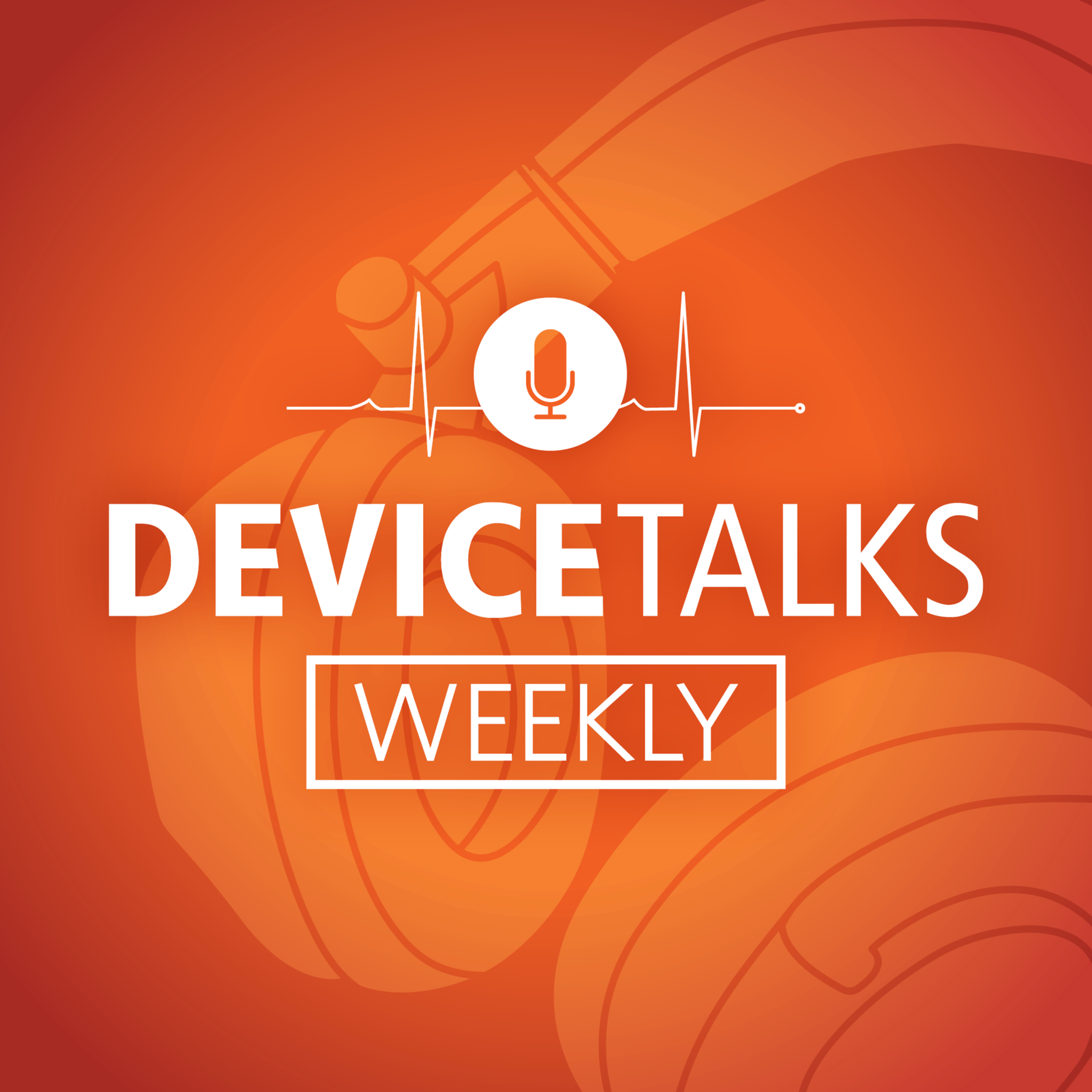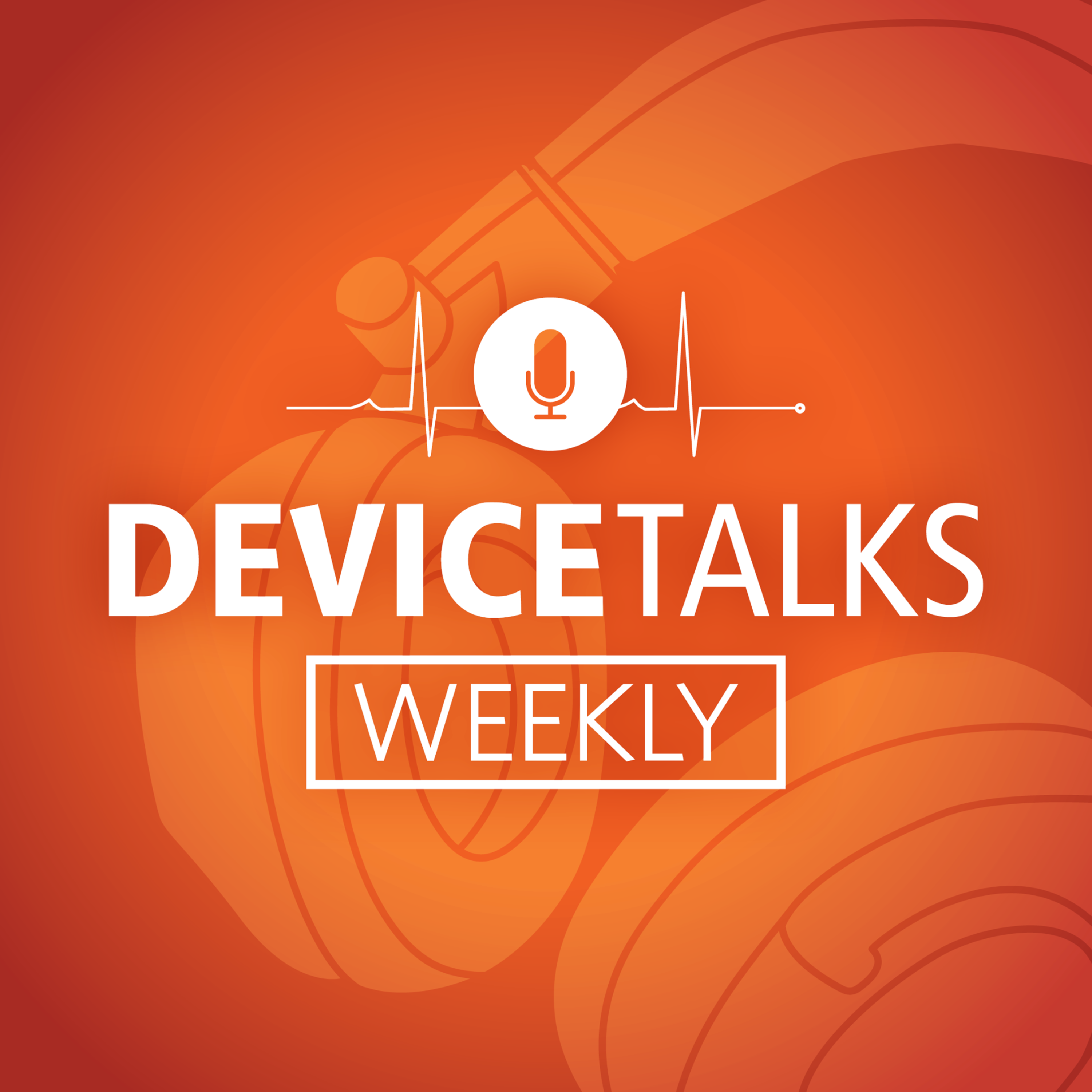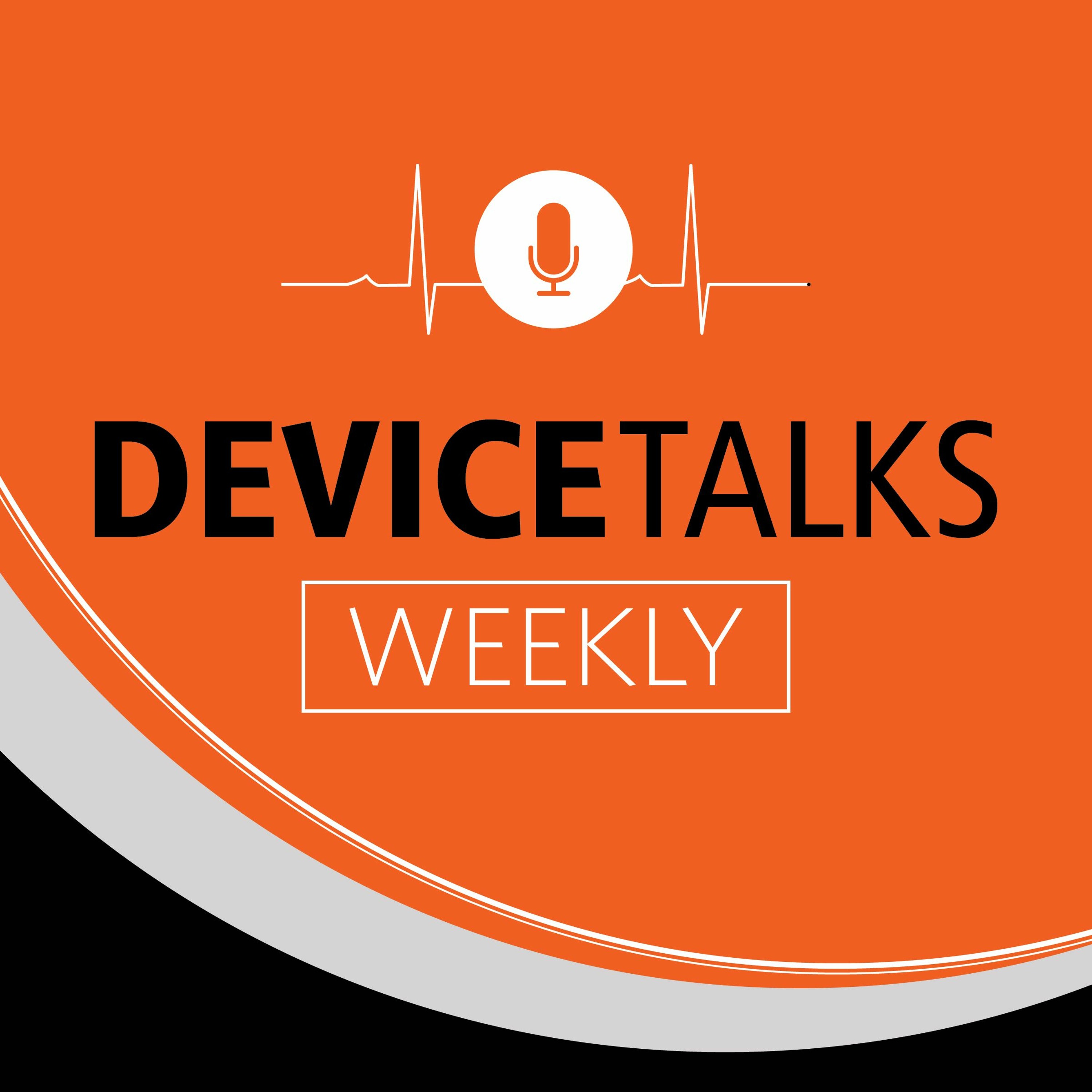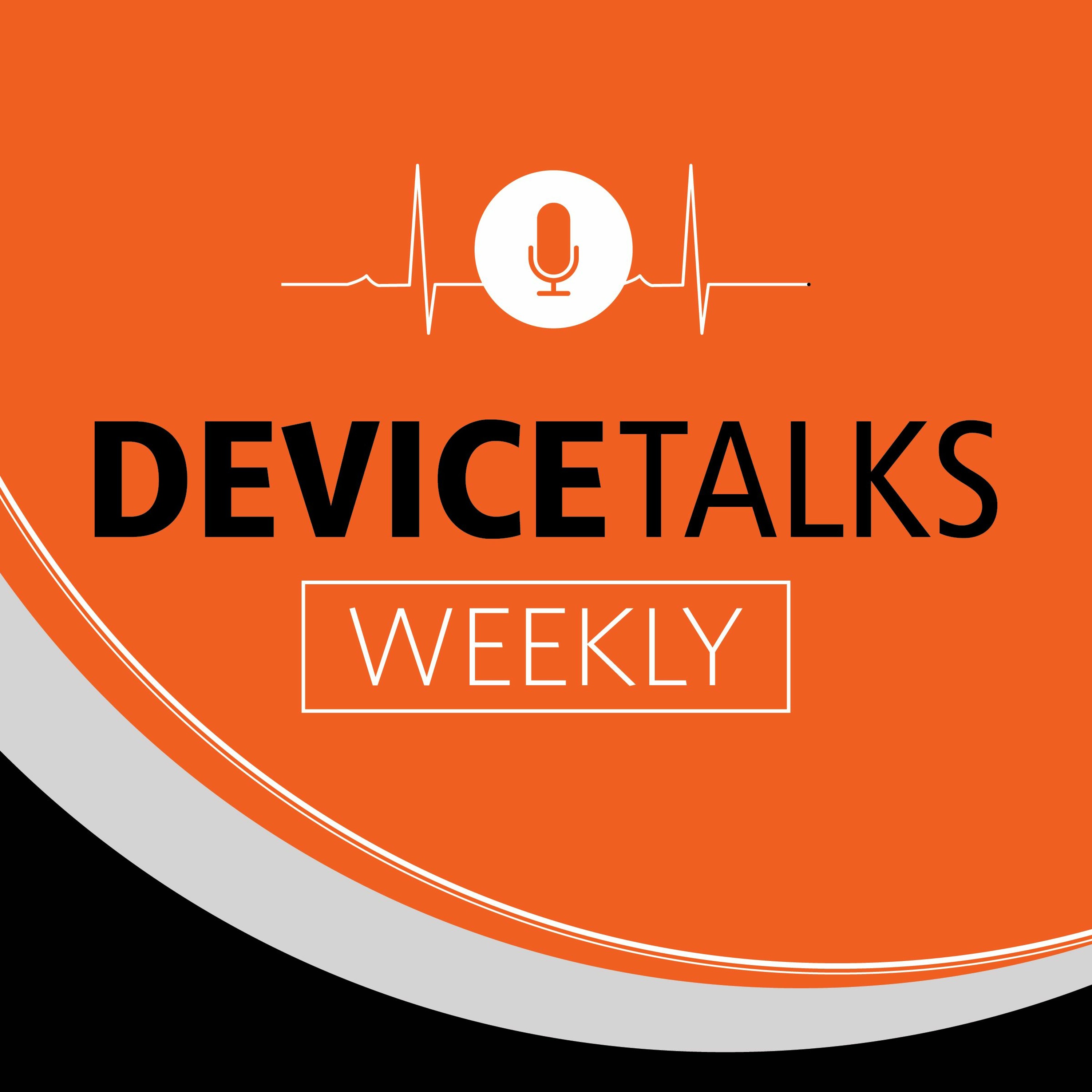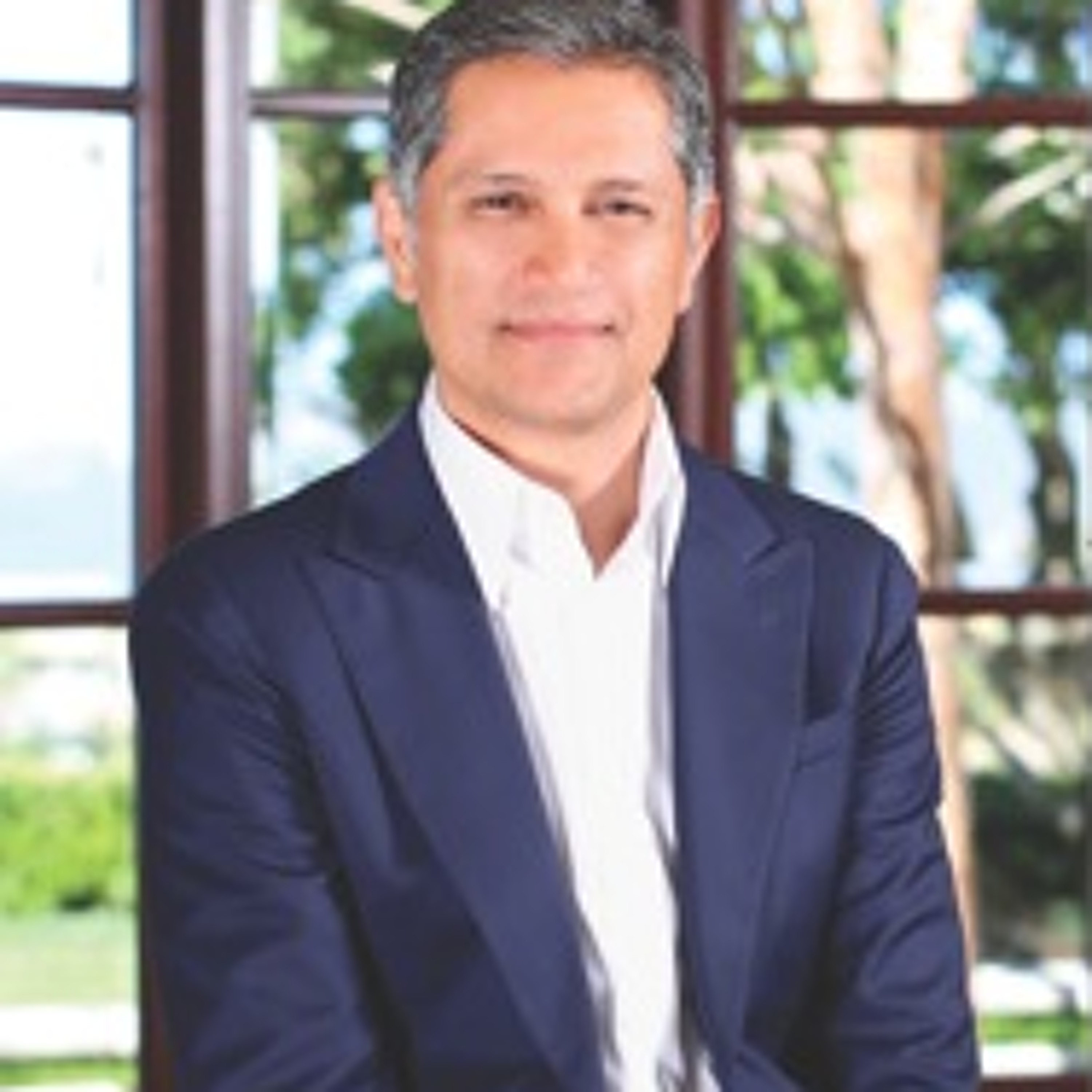Episode Transcript
This is Tom Salemi of DeviceTalks. Welcome back to the Ortho Innovation Talks podcast. Our guest today is Terry Ross. He’s the Group President of Prevention & Recovery at Enovis. We had a far ranging conversation about the prevention and recovery business, which essentially, as Terry explains, is everything that is outside the body when it comes to orthopedics and recovery. So, so we’re talking braces, but we’re also talking about sound wave used to generate bones. We’re talking about lasers. So there’s a lot of innovation, a lot of discussion. We sort of unpack the prevention recovery market as well and learn how Enovis and other companies market their products into that space. So it’s really complicated and interesting space.
Obviously a lot of growth as folks age and as we all need more help, either getting surgery that corrects a problem or getting the help that helps us recover more quickly from an injury. So a very important space. Very great conversation with Terry Ross, again, Group President of Prevention & Recovery at Enovis. And it’s all brought to you by our friends at Regenity Biosciences. Before we begin my conversation with Terry, I want to hand the microphone and camera over to my great colleague, managing editor Kayleen Brown, who spoke with Regenity. Let’s listen.
Jessica Swanson, Vice President of Marketing for Regenity and Dr. Asheesh Bedi, Chief of Sports Medicine and Sports Medicine Surgeon at the University of Michigan, Ann Arbor. Welcome to the podcast.
Thanks, Kayleen.
Thank you. Great to be here.
Would you mind just giving us a really brief background? Dr. Bedi, let’s start with you. What’s your background?
Thanks, Kayleen. You know, I’m, you know, as I shared a practicing surgeon, I grew up, you know, with an interest in science and in particular actually thought I would be a biomedical engineer. I gravitated towards orthopedic surgery because it’s kind of this intersection between technology and innovation and caring for patients. And I’ve been doing that for 20 years. Started when I had hair, don’t have much anymore, but have enjoyed the journey and I’m grateful for the opportunity to be here and share a little bit about that and its application for my patients.
Well, I think it’s a badge of honor. So welcome. Thank you for being here. Jess, can you give us a little bit about your background?
Yeah, absolutely, Kayleen. Well, I’ve been in marketing for about 20 years, 15 of those in medical device. Started my career in medical device at a company, Covidien, that got acquired by Medtronic on the surgical stapling side, then spent a few years at Hologic and breast imaging, and now been at Regenity Biosciences for the last four years now. Absolutely love medical device. When I started in it, I realized this is where I want to be.
And the world of regenerative medicine related to MedTech is incredibly exciting to me.
Oh, hear, hear. This really is the best industry in the world, and I’m so excited when I have the opportunity of sitting down with my people. So thank you again for being Jess. I had the pleasure of sitting down with Peggy Hansen at the last episode of Ortho Innovation Talks. Would you mind just giving us a high level of who Regenity is? Remind us.
Absolutely. Well, Regenity Biosciences is the global leader in bioresorbable technologies for tissue and bone repair. So we specialize in transforming technology platforms across collagen, bio, ceramics, and synthetic polymers into medical devices that serve a variety of industries and segments in the medical device community.
Perfect. Thank you. I have the pleasure of sitting down with two experts, so I wanted to get a better idea. Dr. Bedi, what are the current challenges in treating knee injuries?
Yeah, thanks for the question, Kayleen. You know, one of the things, as I reflect back on my career is, you know, this transition in our field, as you kind of alluded to. You know, one of the challenges in treating patients is you want to restore their function, you want to take care of their pain, you want to bring them back to all the things that they want to do. And especially in sports medicine, my specialty, where whether it’s a professional athlete or a maturing athlete or an adolescent athlete, the goals are always getting back on the field and doing it for a long time.
And in my profession, a lot of that historically, as I think back 20 years, was kind of the surgical side of the equation. And not to minimize the work, but much of that feels a little bit like the carpentry. Right? The. The act of physically doing surgery. And where things have evolved and changed is the realization of evolving from being sort of the carpenter to also the farmer. Right. Recognizing that some of it isn’t just about the technical work. It’s about the biologics and the healing and the principles that you need to follow.
And in particular, as I shared, the meniscus becomes a critical part of that equation. Why is that? If you lose some of that shock absorber, you tear a meniscus, and it ends up being not repairable. You can’t sew it together. Well, the treatment for surgeons like me, even in 2025 is typically to trim that tissue. And there’s study after study that shows progressive meniscal loss, predictably results in developing arthritis in that knee and significantly so sometimes where if you lose a lot of meniscal tissue, it can be a fairly rapid path to that where you’re a young person with a degenerative knee.
And so what’s the excitement for me? Well, you know, companies like Regenity that have developed products where in the a meniscal resection or removal was kind of the treatment of choice has now made part of the opportunity. Well, perhaps there’s an ability to replace that in patients and replace in a way that’s reliable and safe and doesn’t deviate from our minimally invasive advanced surgical procedures to do that for patients. And so I do think that there’s a potential paradigm shift here where what was in the past removal and kind of symptom relief until the knee progressed to arthritis, to maybe an opportunity to restore and replace meniscal tissue in a more predictable way that obviously could be transformative for our patients.
Oh, excellent. So that’s a perfect way to zero in on RejuvaKnee™ out of Regenity. So Jess, could you explain what RejuvaKnee™ is and how it’s designed to work in context of what Dr. Bedi was saying, meniscus repair and the underlining scientific principle?
Yes, absolutely. Well, RejuvaKnee™ is a collagen bovine derived meniscus implant, FDA 510k cleared. It offers a regenerative alternative to traditional meniscus surgery, as Dr. Bedi was explaining. So rather than removing damaged tissue like with a meniscectomy, or replacing the entire meniscus with an allograft, RejuvaKnee™ is implanted in a segmental repair acting as a biodegradable scaffold that encourages the patient’s own native blood vessels and cells to migrate into the implant and rebuild the meniscus. So we believe this could be a game changer by shifting from removal based surgery to regenerative repair, ultimately offering the potential to reduce further degradation in that early onset osteoarthritis.
We’re going to take a really quick break from my conversation with this episode sponsor, Regenity to bring you our interview with Terry Ross, Proup President, Prevention & Recovery for Enovis. I mentioned on the last episode of Ortho Innovation Talks that there’s a fun fact with Regenity. Regenity is known for making a material difference. If you haven’t figured out why yet, please visit their website at www.Regenity.com.
That’s R E G E N I T Y.com. And now, Terry Ross.
Well, Terry Ross, welcome to the podcast.
Thank you. Glad to be here.
We’re continuing to unpack Enovis. Great story. And I know what prevention and recovery is, but it’s one of those titles when you first read it, you’re like, huh, that doesn’t seem to fit into some of the other conversations I’ve had. So we’re going to learn exactly what encompasses or what falls under that business and how those terms apply. But of course, we first want to learn about our guests because we like to know who’s. Who’s talking. So, Terry, walk us through your background a bit. How did you find your way into the medical device industry? You’ve got an interesting background.
Sure, thanks. So started mechanical engineer out of West Virginia University. So let’s go Mountaineers. Had the and joined GE right out of school. So at the time, you know, was looking for someplace that was going to invest right in me, continue my learning journey. Still didn’t exactly know what I wanted to to do. So started manufacturing and supply chain and then realized while I loved that, I really love the whole picture of business and how to create value and how to take care of customers and use business school to make the jump over to the commercial side of the enterprise.
And spent a big chunk of my career with a company called Danaher, which was a top performer, great learning environment. Worked in several of the Danaher businesses and really have worked with people that I met and respected at Danaher, every sense. And so that’s what brought me to Colfax back in 2012, which was my old boss from Danaher. And then we acquired what was DJO in 2019. And that’s when I came into this business, led Recovery Sciences. We’ll talk, I think a little bit more about some of the technologies that make up Recovery Sciences. Many of you will know the Chattanooga brand name and then moved over led our bracing and supports business. So Donjoy and Aircast, I think are the brands that most people know us as.
And now leading the group here as we then transition DJO to Enovis that we are today.
So looking at your LinkedIn profile a bit, you’re GE in the early to mid-90s. I’m trying to remember who was CEO at that time. Was that Jack Welch?
Yeah, it was, it was, it was the Jack Welch era. It was a great time to learn. Company did terrific things then. I was there when we introduced Six Sigma.
Right.
Which was big and which was an important part of my learning journey, you know. And then at Danaher, which focused on LEAN. And so that idea of a business process and continuous improvement in every aspect of the business, everything we do is a process. Sales, talent development, innovation, obviously manufacturing. And so that mindset of you can make every process better and how you do it and how you drive it is a big part of my makeup and it’s at the heart of our value system at Enovis, for those folks.
Who are listening and not watching, Terry got a big smile on his face when he said Jack Walsh. So he’s clearly. It was a formative time and I don’t know, I don’t want to have you represent Six Sigma entirely, but is it. I hear about it a lot and I know obviously I’ve had it described to me before, but just largely, what is it? What kind of imprint did it leave on you? Just that. That you can always, always be better and always improve, or is it deeper in.
No, I think that’s really it because it was. It married very well and in my mind, complemented with the Lean process improvement, the Toyota production system methodology that Danaher had adopted. And so there’s a lot of academic debate, you know, and you get in the Lean and Six Sigma world right on some of the differences and nuances of the tools. But to me, it’s really exactly what I said. The idea that there is always the opportunity to improve and that the level that you can improve to. Maybe one of the differences in Six Sigma that stuck with me is just how great great can be.
And so this idea of setting the target, your expectations really high, because high really is achievable. It may take a while, it may take lots of steps, but you really can be great. You really can be great at quality, you really can be great at design to get cost out. You really can be great at the pace and the speed with which you can drive the innovation cycle in that the Danaher business system, which is a sort of an early stage of what today is the Enovis Growth Excellence business system, is an ability to really tie that all together as a holistic way to think about running and driving your business and creating value.
So how unique has the opportunity been at Enovis? Sort of it was an existing company, but new name, sort of new direction. Do you feel like you’re starting anew? Do you feel like you’re building an addition on a house? What’s the experience feel like?
That’s a good question. I love to build. I like that idea of every day feeling like I’m making a difference, making things better. And, I mean, that’s one of the things I love most about working at Enovis. We are high change, high expectations. Right. Of ourselves. We embrace what’s new. You’ve seen the change in the company over the last several years. I mean, we’re more than double the size we were just a few years ago.
And that’s a combination of internal work in the process. Obviously, we’ve added acquisitions to the company over time, but it’s an exciting place to work.
Fascinating. And talk a bit about the orthopedic space more broadly, and then we’ll get into prevention and recovery. But this would seem to be a space within MedTech that I think that’s the skill set you’re describing most apply, because, I don’t know, it seems there’s a lot of standard processes that obviously can be improved upon, but there’s a certain way of doing things in this industry, and certainly innovation is finding its ways and technology is finding its ways here and there. We’ve had conversations on past episodes about VR and things that are working its way in. But is the orthopedics industry within MedTech, is it particularly suited for all of it? You’re talking about sort of those study improvements?
Well, it certainly is suited. I’ll be honest. I’ve moved in through lots of different kind of companies and businesses in my career, and I think they’re all suited. So I’m not sure that there’s something I see that’s unique in the orthopedics world to the way we approach it. But the opportunity clearly is here in orthopedics, and a lot of the work we do. I know you’ve talked with some of the other folks on the team over time, but the innovation process, it’s a huge area of focus for us.
Not just the innovations themselves.
Right.
But how we bring them to market, how we can move faster, how we can work with our healthcare provider partners, better the, you know, and increase the, you know, the pace and the impact and the speed of adoption.
Right.
Of the things we’re doing, those are some of the ways we think about continuous improvement.
Amazing. So, look, let’s drill down a bit into prevention and recovery. Your portfolio at Enovis, this includes the Don Joy properties and products and came after the integration. So introduce us, if you would, to prevention and recovery.
Well, the easy way to think about prevention and recovery at Enovis is it’s all of the medical devices that are externally applied to the body.
Okay.
So we’re usually taking some form of either force or energy to get a, you know, a healing response or healing support for the body. So you can think of bracing, right. Which is very mechanical, right. Whether it’s, you know, whether it’s, you know, compression or you know, push pull forces.
All right.
To, to support, you know, a joint in. In some way. Laser therapy, right. Using high power laser to deliver light which creates a therapeutic response, a cellular response and a nerve response in the body as part of a rehab journey. Sound shockwave Another important technology in our Chattanooga rehabilitation equipment. So really specializes in tendinopathy but using sound to create mechanical shear stress on cells and that creates a healing or accelerates a healing response in the body.
Electrotherapy. So we’re the leader in electrotherapy. So neuromuscular electrical stimulation tens for pain relief. A lot of different applications of E stimul in rehabilitation and even recovery for endurance athletes, things like that. So it’s a wide ranging product portfolio. Bone growth stimulation. Another area where you’re using electromagnetic force to again sort of match a frequency in the body that creates a chemical production that helps in bone formation where someone is having trouble with a non union of a fracture or surgical procedure.
So lots of different technologies and spaces but they all do share that idea in common, right. Externally applied and to try and support or cause a healing response in the body.
That’s all, that’s all very, very cool stuff. It feels very Star Trekkie.
I have a lot of fun with it.
Talk about the market, the prevention recovery market. So are you dealing or are your customers physical therapy groups, are they hospitals, are they individuals or is there a consumer element? Are you selling directly to those?
It is all of the above. If there is any type of, you know, muscular skeletal care happening, we on prevention and recovery, we touch, touch that. It makes for a very. It’s one of the business challenges, right? It’s a. It’s a. A broad range of solutions the and in a very broad range of settings and a broad range of clinicians. So we’re dealing with, you know, sports medicine, surgeons, you know, recon surgeons, athletic trainers, physical therapists, chiropractors.
The fitness into some of the products. Right. Especially in sort of recovery. So and we have. It’s a smaller part of our business but direct to consumer is a. Is part. We really engage a unique in. I think for a lot of the bigger orthopedic players, we engage with the end patient.
The individual person out there all the way from prevention type things that you see in athletics with protective braces, avoiding injury in the first place or helping with recovery after activity all the way through sort of lighter stage injuries that somebody that doesn’t, you know, require surgical intervention and then certainly, you know, as you get into more either degenerative diseases like osteoarthritis or injuries like, you know, an ACL or, you know, or, you know, shoulder injury and then rehabilitation and on into elderly care and support as we all age. That’s the one thing in orthopedics.
We’re all, we all have probably been patients and certainly will be. And so it’s, it’s easy for us to think about and, and really feel and care for the patients that we serve because it hits very close to home for all of us.
So, so there’s a lot of opportunities, a lot of potential touch points in terms of sales or customers. It’s interesting though. I would, I would think that whereas maybe in other Med, I would equate other medical device or medical device businesses to almost selling like a frozen meal, like, here’s the device, here’s the system. You know, it’s done. Use it this way. Whereas with your technologies, I wonder if there’s more user flexibility. Maybe they.
There is. It’s actually a great way. It’s a great way to think about it. That’s certainly true with the modalities that we provide to the physical therapist or the athletic trainer.
They are, it really is a tool for them to use in, in, in a whole variety of ways.
And to, to think about how they want to best help that patient. And it’s almost always, it’s not a, it’s almost never a solution in itself. It is an adjunct to the treatment.
That, that, that they’re providing.
How do you support them in engage or what kind of support do you give them and, and how much latitude they have all the latitude they need, I guess, but how much they do.
And so it’s a lot of medical education. We’re involved all the way at the university curriculum and we do a lot of support there. So these modalities are part of their initial medical training. And then we’re there with them, you know, in the field through, you know, through their journey. So we’re, you know, supporting them at all of their congresses, continuing education and, you know, direct support in their, in the, in the clinics.
So it’s, it’s a very, you know, we, at Enovis, we talk about creating better together and it really is so, you know, both on the rehabilitation equipment side and on the bracing and sports side, you know, almost everything we develop or work on is done in conjunction with healthcare provider partners.
I’m gonna have to put a pause on our conversation with Terry Ross of Enovis to bring back our episode sponsor, Regenity, and the conclusion of our conversation. Enjoy.
Excellent. So you touched the word potential. So back over to you, to Dr. Bedi, in your experience, what is the overall potential of regenerative medicine approaches such as RejuvaKnee™ compared to traditional methods?
What the potential, I think, for RejuvaKnee™ is? You know, as Jess alluded to, it kind of preserves the native architecture of the meniscus, but it’s been purified. They’ve done some good animal studies and actually achieved FDA 510 approval, which is a big milestone to show a level of safety and efficacy that allows you to start doing that in patients. And so we’re kind of actively in clinical trials currently going on where we’re actually identifying patients and implanting the RejuvaKnee™ for exactly that kind of indication.
So I think that the potential is kind of very optimistic because in the past where it’s been one or two things, we now sort of have all the elements of something that’s strong, something that’s compatible, something that can support kind of ingrowth of tissue from the patient and now has already achieved kind of the thresholds of safety in large animal models to now try in patients.
Well, congratulations to you both. Jess, is there anything to add?
Yeah, I’ll just elaborate on what we found in our pre-clinical study and reiterate what Dr. Bedi communicated. You know, the safety and efficacy is supported by the FDA 510K clearance that was achieved back in October of 2024. A robust preclinical canine study showed that within three months, the implant supports full weight bearing, restores joint motion, and by 12 months demonstrates nearly five times more meniscus regrowth than standard of care being meniscectomy. We’ve also done extensive bench tests and human cadaver work with the help of Dr. Bedi and others that have confirmed the ease of implantation and surgical techniques with off the shelf fixation.
And In January of 2025, the first patient received the RejuvaKnee™ implant. A young collegiate athlete who’s recovering really, really well. So overall, while broader clinical cases are happening during our limited market release, you know, the combination of regulatory approval, the animal data, the promising early human use, makes us feel even more confident around the impact that RejuvaKnee™ can make.
That’s so encouraging. Dr. Bedi, anything to add about the clinical data or the ongoing trial?
I think what this gives us, right, is a solution for a problem that we know is going to grow and potentially become an irreversible one, where we no longer can talk about joint repair and salvage. We can also only talk about knee replacement, but intervening at a time where we may be able to change that natural history, right? Delay, delay that onset of arthritis, particularly for young patients. So for me, what’s most exciting about this is while it’s a difficult journey because of the requirements of biologic healing, because of the requirements of having a strong scaffold, it’s a very worthy investment.
Because if, in fact you can achieve that for patients, not just pain relief, but you can actually change natural history, that’s a pretty big discovery, at least in my career over the last 20 years and hopefully for the next 20.
So then how would RejuvaKnee™ fit into the current treatment landscape? Like, relative to its compatibility with off the shelf instrumentation already used in meniscal repair procedures by many of the companies that are probably listening to the podcast right now?
Yeah, great. Great question, Kayleen, and I’ll answer, and then I welcome Jess’s thoughts. So, you know, first and foremost, I think a few things. One, because it is off the shelf, right? It becomes available for any patient when you’re in the operating room and say, gosh, I thought this might have been a repairable meniscus, but it wasn’t. Or this patient lost a lot of meniscus. And I don’t want to have to bring this patient back for surgery. But right today, I’m in the position to potentially treat and address this issue.
That’s a huge advantage today. You know, absent RejuvaKnee™, that’s a staged procedure. And oftentimes patients don’t come back for the second one, especially if they’re asymptomatic today and they’re doing well in the short term, sometimes they’re not calculating about the long term. But what’s very nice about that is this RejuvaKnee™ product can really be used with the current devices that we use today. So the same equipment and tools I use to repair a meniscus are the same set of equipment and tools I would use to deliver the RejuvaKnee™ scaffold.
It’s the same techniques, it’s compatible with, you name it, in terms of vendor, of choice, in terms of implant to deliver. And so it doesn’t add a lot of encumbrance for surgeons like me who feel like, gosh, if I want to use this technology, I have to go through this whole new learning curve to figure out how to perform this procedure, which creates a little disincentive in the midst of our busy clinics and ORs.
I also think that from the perspective of, you know, for patient care, it’s also become simple. It’s a team that delivers this patient care, not a doctor. And so having everybody in the operating room feel familiar with, oh, we now have a solution to that. It’s right here on the back shelf. It’s available for us. And it’s something that has become part of our protocol and doesn’t add a lot of encumbrances for the entire team to learn all of those things. I think for those who are listening, make it easier to adopt in practice.
And I think Jess can speak to it. But that’s been shown here in the early steps of the clinical trial with patients.
So I always like to round up my conversations with the look to the future. So for both of you and Jess, let’s start with you. What role might tissue engineering or other regenerative medicine strategies play in the future management of meniscus injuries?
We think there’s tremendous potential. Regenerative strategies really open the door to biologically active solutions that support the body’s own healing potential. So bioresorbable scaffolds like RejuvaKnee™, you know, can encourage new tissue formation, integrate more naturally with native tissue, aiming to preserve function, delay or prevent osteoarthritis in the case of the meniscus, and ultimately improve long term outcomes for patients.
So we believe as our understanding of biomechanics, biology and material science continues to evolve, we’re going to see a shift toward earlier intervention with regenerative solutions that don’t just fix the tear in the case of meniscus, but really help to rebuild the meniscus itself. And we think that can be applied to other anatomical challenges.
Well, Dr. Ashish Bedi, Chief of Sports Medicine and Sports Medicine Surgeon at University of Michigan, Ann Arbor, and Jessica Swanson, Vice President of Marketing for Regenity, thank you so much for joining us on Ortho Innovation Talks. I thoroughly enjoyed myself.
Thanks, Kayleen.
Thank you, Kayleen.
I have thoroughly enjoyed learning more about Regenity in this and the last episode of Ortho Innovation Talks. Huge, huge thanks to Regenity for supporting, supporting us and supporting these great MedTech conversations. Regenity is known for making a material difference, so please visit their website Regenity.com to learn more. That’s R E G E N I T Y.com. And now for the conclusion of our conversation with Terry Ross of Enovis.
Is the communication largely one way you sharing this education with your customers or is there. I could, I wouldn’t imagine that there’s also information coming back to you that, you know, gives you new ideas. Maybe people who are trying new technologies or say we’re using with. Where does. Does, does a lot of your innovation come from your customers? Where does your innovation come from? It’s, there’s. Seems like there could be a lot of different sources.
It’s very, it’s very interactive, I think the way I would say it. So, so certainly there’s both. One of the advantages we have on prevention and recovery is we’re the industry leader in bracing. We’re the industry leader in rehabilitation equipment, one of the top players in bone growth stimulators. So we have great relationships with the surgeons and the physical therapists and the other healthcare providers that we interact with. And they, through those conversations, bring us, you know, a lot of ideas and share the challenges they’re having, the places they wish they had a better solution.
Something better to offer their patients. Right. Or a pain point in their practice. So the, another important part of our, you know, we talk about at Enovis, right. We exist to. For great patient outcomes.
Right.
To improve patient outcomes. We also exist to improve clinic success. And so we do a lot of work on workflow in the clinic across and that really is applicable across.
Of our prevention recovery solutions. So Motion MD is a good example. About a little over 40% of the clinic locations in the US use our Motion MD platform to run their DME activity in the clinic. So it is a workflow software. So it’s entirely about streamlining the process, improving their ability to properly document and put the right brace on the patient and get reimbursed and paid for that brace on the back end.
And so it’s clinic productivity and clinic financial success that we do. So that’s an important part. And that’s true how we think about rehabilitation modalities as well. Right?
Reducing treatment time, how it’s going to fit into their clinic, how it then gets into their protocols and fits with their other treatment activity. So it’s a very interactive conversation with our healthcare providers.
Really interesting. And digital health technologies are finding their way into every part of our medical device industry. How are they fitting into what you’re doing at prevention and recovery?
Yeah, no, it’s an important part of our business as well, we have in a product in the US called Motion iq. So we’re very focused on the patient journey, particularly the rehab journey, but increasingly are, it’s, it’s, we see it as a, as another workflow tool. This time it’s workflow both in the clinic and for the patient. Right
As they go through the journey. One of the big challenges is, is while the clinician may, you know, do this procedure, you know, every day, many times for the patient, it’s a sample size of one and they, you know, there’s a lot that they don’t know. They don’t remember from the doctor’s visit.
They haven’t quite built this into their habit every day. And the digital applications help patients learn to do that, reduce anxiety through the process, better engage in their own recovery and that leads to faster and better recovery results. So that’s an important part. We have products also in each healthcare system is a little different. And so we find, as opposed to some of the physical products, the digital products wind up being very custom to the healthcare system around the world that they fit in. So we have big initiatives in Germany and Australia here in the US and beginning to work in a few, in a few other countries on these digital solution applications.
And you also have an offering for the practices themselves to help with management.
Well, I mentioned Motion MD earlier. That’s a very established product for us. We are the industry leader in that workflow. Think of it as the business of DME and the workflow in a clinic and that we just launched. In fact, we just launched an entirely new user experience front end for that solution. Reducing the time to enter a claim by 20% by an additional 20%. This has already been something that we had worked on in the tool. So keep finding new ways to reduce the time, the staff time to do the documentation and tying in the medical records and processing the claim and then improving the collection rate on the back end because you’ve got a clean claim, right, with all the proper documentation, all in the right order, all ready to go to present to the payer.
I think if you had asked 20 or 30 years ago about needing all of this for, particularly for large joint procedures, for knee procedures, there might have been pushback saying like, we’re fine, we don’t need any follow up, we’ve got a 90% success rate. It’s interesting to me though how much we’re realizing how important the follow up is, how success can be very individual for patient to patient. So what have you seen just in terms of the Adoption of these new technologies to help the patients and to help the practitioners sort of follow up with the patients. I mean, this now seems like a critical piece of the health care of the medical process.
I think it is and I think it’s something at least what I see the physicians are very focused on. They understand that there’s more. When the patient thinks about their experience, there is more than just the structural fix that they’re thinking about the entirety of their interaction. How much pain during recovery is a great example. Right.
So they, that may be separate from whether the joint returns to full function, you know, after, you know, six months. The, the, that. But those early days, right. How do you reduce the need for opioids or medication?
Of any type. That’s a good point. You know, product, we provide a cold therapy product. Some of our modalities have really good application in that pain relief. Helping patients. Right. Reduce pain and therefore the inhibition or the want to maybe not do their rehab. Right
That they should do or you know, start moving, you know, at the pace that the doctors told them they should. You know, there’s, there’s, that’s a, that’s a big loss in a lot of patient journey. And the, and then, you know, that patient usually, you know, is, is, is not only less satisfied with the experience. Right. Because it hurts, but then they have trouble sometimes getting their mobility going. Right
The, the, the when they should be ready to do more and get back to more strength building and, and activity. They’ve lost time.
In their recovery journey. So can that get made up over time and still get a, you know, a positive functional outcome? Most of the time, yes.
But there’s an opportunity to just back to the idea that every process can be better. Right.
We can make it better for the patients.
Absolutely. Final question or final couple of questions. What about the future of your more physical tools, your bracing, your supports and other energy based devices? What do we see coming there?
Yeah, so a few thoughts there. One of the keys in bracing and one of the places where it’s really technology driven is around comfort and wearability. So there’s a saying, embracing, right. The best brace is often the brace the patient will wear. It’s something extra. Right?
Nobody wants it. So how do you make it provide the right structural support that someone needs, but lighter, more breathable materials, easier to put on and off, more, you know, comfortable to wear. Right.
More comfortable. Not just to the touch, but also in, in, in sort of, you know, how it puts pressure on the body. All of these things that Improve the wearability of the, of the, of the product and, or the solution for the customer. So that’s, that’s where a lot of the, you know, technology in bracing is really focused on those points, those elements. It’s a little bit, it’s got a lot of similarities to, you know, athletic shoes, right. Or hiking equipment or other things where you think about, you know, that material and weight and usability trade offs that the engineers, you know, have to manage.
In terms of indications, there’s still a huge focus in our portfolio on osteoarthritis. We still think that is a place where bracing is one of the best use cases. We have great impact for folks that aren’t surgical yet. Earlier stage, early and mid stage disease state where they can get a lot of pain relief, return to much more active lifestyles by brace. And so there’s a range of bracing solutions that we have launched recently. Our big Rome brace was a big launch last year and a big advancement for us.
We have some others in the pipeline coming on the rehabilitation equipment side of the house. A lot of focus around the laser technology. This is still earlier in its adoption curve in physical therapy and interventional pain and in athletics. And so the, you know, improving a lot of work is around the dosing. Right?
That’s one of the challenges with laser with Shockwave as well is, you know, getting the right dose to the tissue and reducing treatment time to do so.
And so are used for bone growth as well. Or how are the, what are the lasers?
No, the laser is not for bone growth. The laser is, it drives a process called photobiomodulation. So it triggers the cell to get through the healing cycle faster. I’d have to get one of the engineers to take us through the chemical cascade, but it’s an adjunct in the healing process. And so again, it’s an adjunct to the rest of the physical therapy regimen. It also has a significant pain relief effect.
It irradiates the nerve and the nerve reacts to that light. And so it’s got a great pain relief effect that can last for quite some time. So that combination again gets people back moving, right? Less pain, more activity, getting people moving. That’s what we’re about.
Yep, absolutely. So what lies ahead for prevention and recovery? What are we looking at five to ten years from now? What’s the future look like?
Well, let’s see. We certainly, I think at Enovis have demonstrated we change a lot, we move a lot and we have a lot of things we’re working on. So I’ll maybe come back and share with you another time as we get some of it out to the to the marketplace.
Well, you’ve got lasers now, so you’re you’ve piqued my interest, so we’ll definitely have to revisit this conversation. Thanks for joining us on the podcast.
Thank you, Tom.
All right, well, that is a wrap. Thanks so much for joining us on this episode of the Ortho Innovation Talks podcast. Once again, thank you to our sponsor, Regenity Biosciences. It’s so great to have their support and I really enjoyed my conversation with Terry Ross, Group President of Prevention & Recovery at Enovis. Thanks to the folks that are Enovis for making their their team available. If you like to if you’d like to listen to future podcasts, either Ortho Innovation Talks podcast or other DeviceTalks Podcast Network podcasts, make sure you subscribe to the DeviceTalks Podcast Network on any major podcast player.
You can also be kept informed and up to date by following DeviceTalks on LinkedIn. We post all of our podcasts there. Connect with me personally as well. We’ll we’ll be posting our future episodes on my I’ll be posting future episodes on my feed or our managing editor, Kayleen Brown. We’d love to be part of your future MedTech conversation, so you make sure you connect with us on LinkedIn. And finally, if you do us a favor and share this podcast episode on LinkedIn, we’d love to love to have more people listen and find out about our Ortho Innovation Talks podcast. That’s it, folks.
Thanks again for listening and watching this episode of the Ortho Innovation Talks podcast.
